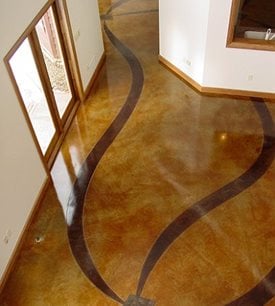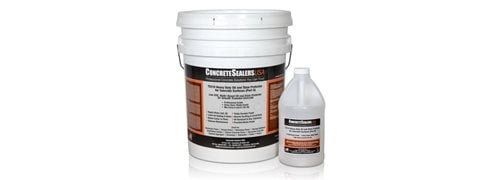
Cornerstone Concrete Designs in Orrville, OH
No decorative concrete floor installation is complete without the application of a sealer. Taking the time to put down this final layer of protection not only prolongs the life of your floor, but can also enhance and preserve its appearance. Here's a list of common questions about concrete sealers and how they work to protect your floor.
Find concrete floor sealing contractors near me
WHAT DOES A CONCRETE SEALER DO?
A concrete floor sealer will beautify and preserve your floor. Sealing brings out the beauty of a concrete floor by enhancing the color and adding sheen. Sealing also preserves the decorative treatment by protecting the concrete surface from abrasions and stains. Some floor sealers form a protective film on the surface of the concrete, while others penetrate into the floor.
HOW DO YOU SEAL AN INDOOR CONCRETE FLOOR?
Many people opt for having their floors professionally sealed. But, if you are thinking of doing it yourself, here are the steps for sealing concrete floors:
- Allow recently poured concrete to cure fully
- Let stains or overlays dry thoroughly before sealing
- Remove baseboards or cover them for protection
- Clean the floor and wait for it to dry
- Wear protective gear and clothing
- Open doors and windows for proper ventilation
- Apply a thin coat of concrete floor sealer and let dry
- Apply a second coat in the other direction, let dry
- Coat the surface with concrete floor wax to prolong the life of the sealer
- Reapply the sacrificial wax as it wears off
- Reseal your concrete floor every few years
Is it better to roll or spray concrete floor sealer?
Most professionals agree that spraying sealer produces more consistent coverage. Plus sprayers are faster and more efficient for covering a large floor. Many contractors use a combination of spraying and back rolling to work the sealer into the floor and improve adhesion. Make sure the roller you use won’t shed lint into the sealer during application. Always check to see if the sealer manufacturer recommends a specific application tool.
WHAT IS THE BEST SEALER FOR CONCRETE FLOORS?
Film-forming sealers (those that form a protective film on the concrete surface) are the type most often used for interior decorative concrete work. In the category of film formers, however, you'll find several different types, each with advantages and limitations. Learn more about the types of sealer.




